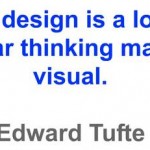Week.7 Business, Branding and Promotion
Business, Branding and Promotion / The ‘Look & Feel’ of a CIPS.
BBP / Theory Outline
For further study material for BBP theory see references .
1.BBP
A business plan
A business plan is a formal statement of a set of business goals, the reasons why they are believed attainable, and the plan for reaching those goals. It may also contain background information about the organization or team attempting to reach those goals.Business plans may also target changes in perception and branding by the customer, client, or larger community. When the existing business is to assume a major change or when planning a new venture a 3 to 5 year business plan is essential.
A branding plan
Branding describes the process by which entrepreneurs differentiate themselves and stand out from others by identifying and articulating their unique value proposition, and then leveraging it across platforms with a consistent message and image to achieve a specific goal. In this way, enterprises can enhance their recognition as experts in their field, and establish reputation and credibility. Branding consists of three elements: . Value Proposition: What does it stand for? . Differentiation: What makes it stand out? . Marketability: What makes it compelling?
Promotion plan
Promotion is one of the four elements of marketing mix (product, price, promotion, distribution). It is the communication link between sellers and buyers for the purpose of influencing, informing, or persuading a potential buyer’s purchasing decision. The following are two types of Promotion: Above The Line Promotion: Promotion in the media (e.g. TV , Radio, Newspapers , Internet, Mobile Phones, and, historically, Illustrated songs) in which the advertiser pays an advertising agency to place the ad. Below The Line Promotion: All other promotion. Much of this is intended to be subtle enough for the consumer to be unaware that promotion is taking place. Examples: sponsorship, product placement, endorsements, sales promotion, merchandising, direct mail, personal selling, public relations,trade shows.
2.The ‘Look & Feel’ of a CIPS.
Humans visually perceive iitems not in isolation, but as part of a larger whole.

Themes:
Defining the ‘The Look and Fee’l of the CIPS in 3D CAD, sketches and storyboards, specifying materials and finishes.
Elaborating on the look and feel of the CIPS to match the Social Mission as developed in stage nr. 1 : 3-i. In other words constructing a message by product design. Good CIPS design should act as a catalyst for ‘Social Change’.
There is general agreement that the way forms are seen follows ‘Gestalt’ rules, these suggest that things are initially seen holistically (as a single object). If this visual form holds attention or is of interest it is then viewed atomistically,iin other words the different elements that make up the form are considered.
Gestalt is a psychology term which means “unified whole”. It refers to theories of visual perception developed by German psychologists in the 1920s. These theories attempt to describe how people tend to organize visual elements into groups or unified wholes when certain principles are applied.
‘Look & Feel’ of the CIPS can help to convey your Social Cohesion Design message.
References
Steffen, Dagmar ,2000, Design als Produktsprache, Der Offenbacher Ansatz in Theorie und Praxis, form Publisher, Frankfurt am Main.
Csikszentmihalyi Mihaly / Rochberg-Halton Eugene,1981, The meaning of things, domestic symbols and the self, University of California Pres
Arnheim, Rudolf , 1969: Visual Thinking, Berkeley, California, University of California Pres
Rheinfrank, J., & Evenson, S. ,1996. Design Languages. In T. Winograd (Ed.), Bringing design to software (pp. 63-80). New York: Addison-Wesley (ACM Press).
.



